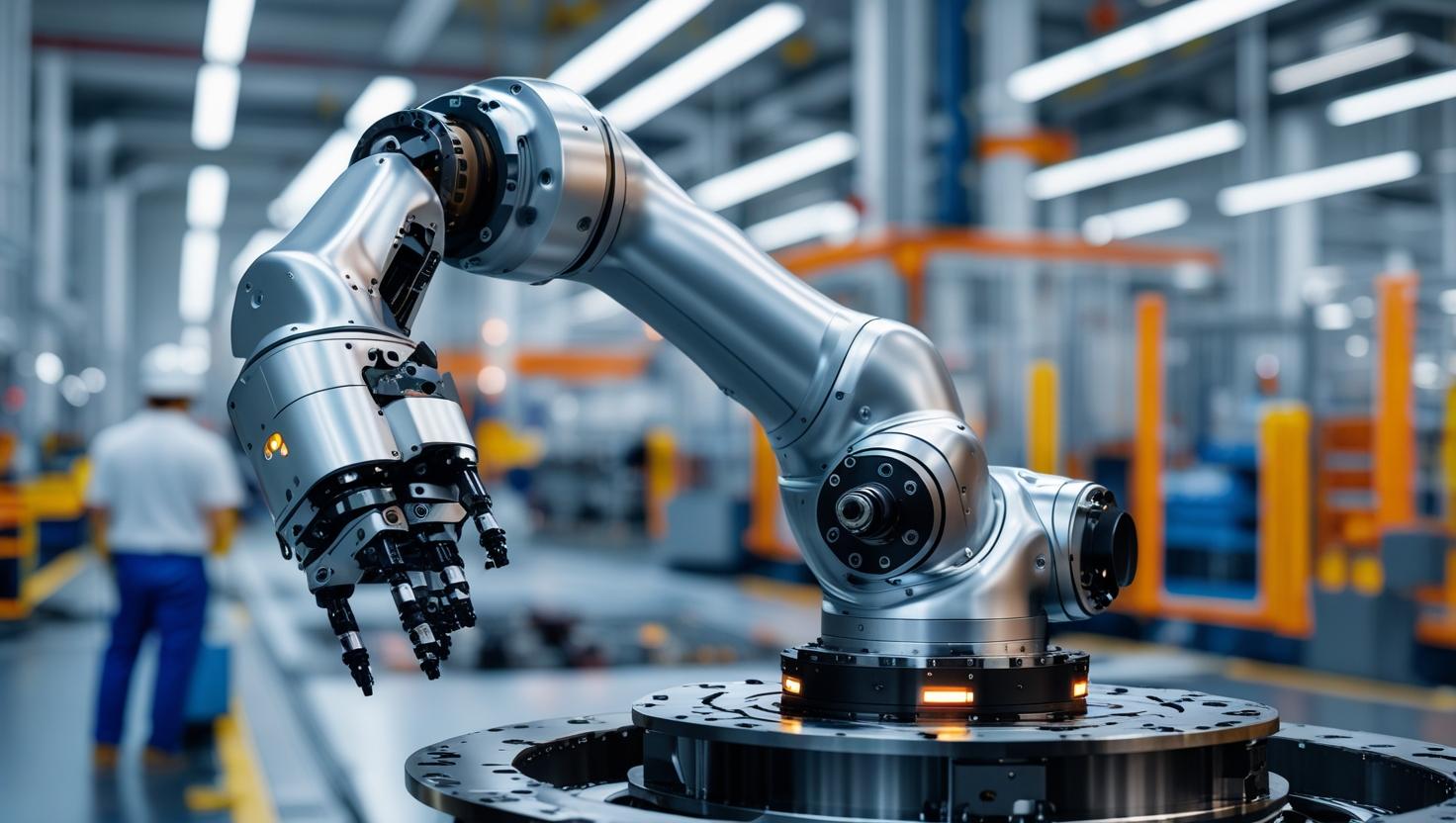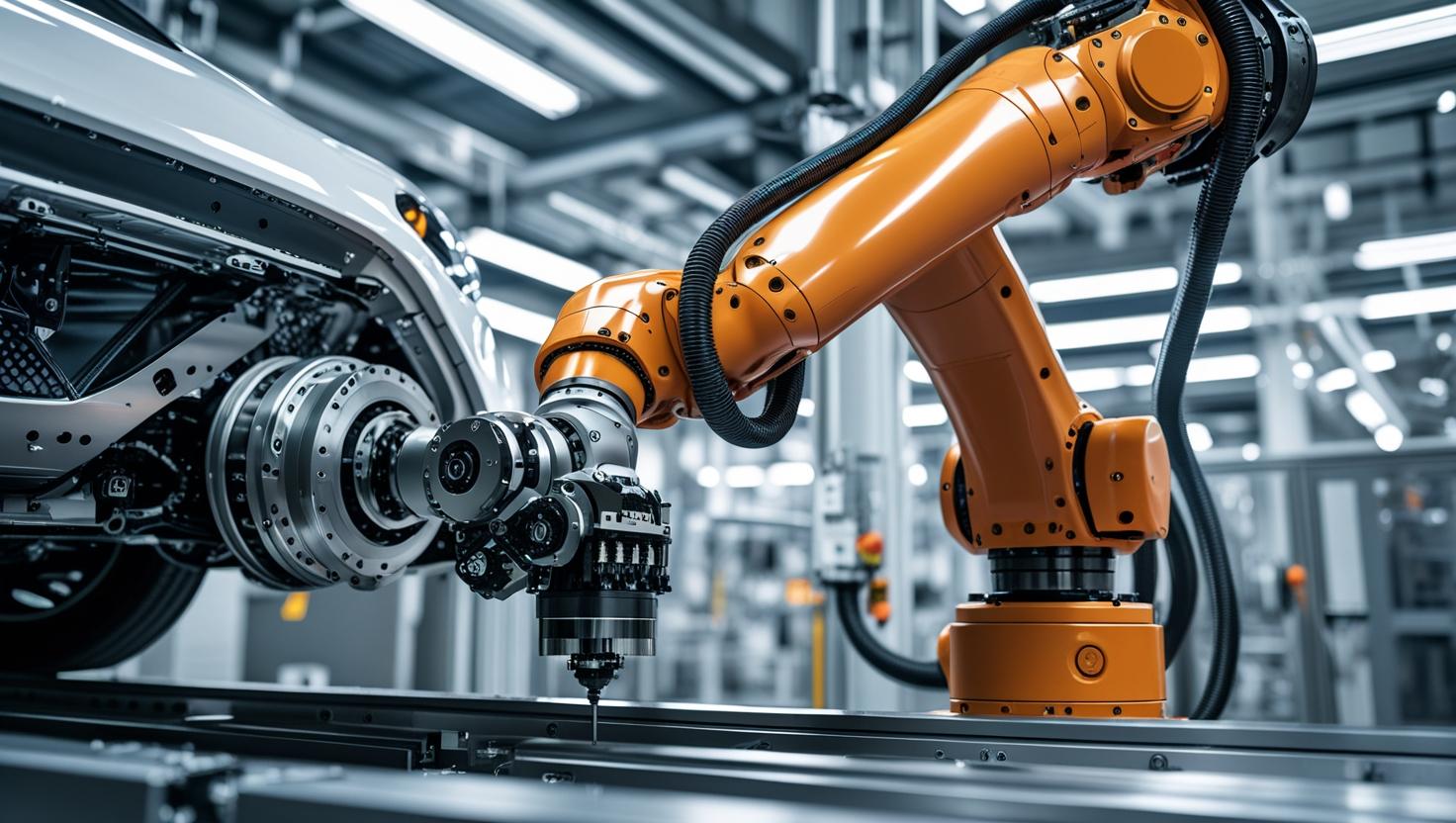Motion control in the automotive manufacturing industry refers to the use of advanced systems and technologies to manage and regulate the movement of machinery, tools, and components during the production process. These systems ensure precision, speed, and efficiency in tasks such as assembly, welding, painting, and material handling. By integrating sophisticated motion control systems, automotive manufacturers can achieve higher productivity, reduce errors, and meet stringent quality standards demanded by modern vehicles. The automotive sector relies heavily on automation to stay competitive, and motion control is at the heart of this transformation, enabling seamless coordination of complex processes. This article delves into the role, technologies, applications, and benefits of motion control in the automotive manufacturing industry, highlighting its impact on modern production lines.
The global motion control market size is estimated to be worth USD 16.5 billion in 2024 and is projected to reach USD 21.6 billion by 2029, growing at a CAGR of 5.5% during the forecast period from 2024 to 2029.

The Importance of Motion Control in Automotive Manufacturing Industry
The automotive manufacturing industry is characterized by high-volume production, intricate designs, and stringent safety regulations. Motion control in the automotive manufacturing industry plays a pivotal role in meeting these demands by ensuring that every movement in the production line is precise and repeatable. From robotic arms assembling vehicle parts to conveyor systems transporting components, motion control systems provide the accuracy needed to maintain tight tolerances. Without these systems, manufacturers would struggle to achieve the consistency required for mass production while adhering to safety and quality standards. Furthermore, motion control enhances operational efficiency by reducing downtime, minimizing waste, and optimizing resource utilization, making it a cornerstone of modern automotive manufacturing.
Key Components of Motion Control Systems in Automotive Manufacturing
Motion control systems in the automotive manufacturing industry are built on several core components that work together to deliver precise and efficient operations. These components include:
-
Motors and Actuators: Servo motors, stepper motors, and linear actuators drive mechanical movements with high precision.
-
Controllers: Programmable logic controllers (PLCs) and motion controllers process inputs and manage motion sequences.
-
Sensors and Feedback Systems: Encoders, vision systems, and proximity sensors provide real-time data to ensure accurate positioning.
-
Drives and Amplifiers: These regulate power to motors, ensuring smooth and controlled movements.
-
Software and Interfaces: Advanced software solutions enable programming, monitoring, and optimization of motion control systems.
Each component plays a critical role in ensuring that motion control in the automotive manufacturing industry delivers the desired outcomes, from precision assembly to automated quality checks.
Technologies Driving Motion Control in Automotive Manufacturing Industry
The evolution of motion control in the automotive manufacturing industry has been fueled by advancements in technology. Key technologies include:
-
Robotics and Automation: Collaborative robots (cobots) and industrial robots use motion control for tasks like welding, painting, and material handling.
-
Artificial Intelligence (AI): AI algorithms optimize motion paths, predict maintenance needs, and improve system efficiency.
-
Internet of Things (IoT): IoT-enabled devices allow real-time monitoring and data exchange, enhancing system coordination.
-
Machine Vision Systems: These systems guide robots and machinery with high precision, ensuring accurate component placement.
-
Advanced Software Solutions: Motion control software enables complex programming, simulation, and real-time adjustments.
These technologies collectively enhance the capabilities of motion control in the automotive manufacturing industry, enabling manufacturers to achieve unprecedented levels of automation and efficiency.
Applications of Motion Control in Automotive Manufacturing Industry
Motion control in the automotive manufacturing industry is applied across various stages of the production process, each requiring precise and reliable movement. Some key applications include:
Assembly Line Automation
Motion control systems are integral to automated assembly lines, where they manage the precise positioning of components such as engines, chassis, and interiors. Robotic arms equipped with motion control technology can handle tasks like bolting, screwing, and aligning parts with sub-millimeter accuracy, ensuring flawless assembly. These systems reduce human error, increase production speed, and maintain consistency across thousands of vehicles produced daily.
Welding and Joining Processes
In automotive manufacturing, welding is a critical process that demands precision to ensure structural integrity. Motion control in the automotive manufacturing industry enables robotic welding systems to follow precise paths, delivering consistent welds on complex geometries. Laser welding, spot welding, and arc welding all benefit from motion control, which ensures repeatability and minimizes defects in vehicle frames and body panels.
Painting and Coating Applications
Achieving a flawless paint finish is essential for both aesthetics and corrosion protection. Motion control systems guide robotic arms to apply paint or coatings evenly across vehicle surfaces, following intricate patterns to avoid overspray or uneven coverage. These systems ensure uniformity, reduce material waste, and enhance the durability of the paint finish.
Material Handling and Logistics
Motion control in the automotive manufacturing industry is also critical for material handling, where automated guided vehicles (AGVs) and conveyor systems transport components across the factory floor. These systems rely on precise motion control to navigate complex routes, avoid obstacles, and deliver materials to the right location at the right time, optimizing production flow.
Quality Inspection and Testing
Quality control is paramount in automotive manufacturing, and motion control systems play a key role in automated inspection processes. Vision-guided robots use motion control to position cameras and sensors accurately, inspecting components for defects or dimensional inaccuracies. This ensures that every vehicle meets strict quality standards before leaving the production line.
Benefits of Motion Control in Automotive Manufacturing Industry
The adoption of motion control in the automotive manufacturing industry offers numerous benefits that drive efficiency, quality, and profitability. These include:
-
Enhanced Precision and Accuracy: Motion control ensures components are placed, welded, or assembled with pinpoint accuracy, reducing defects.
-
Increased Production Speed: Automated motion control systems operate at high speeds, boosting throughput without compromising quality.
-
Reduced Operational Costs: By minimizing errors and waste, motion control lowers production costs and improves resource efficiency.
-
Improved Worker Safety: Automation reduces the need for manual intervention in hazardous tasks like welding or heavy lifting.
-
Scalability and Flexibility: Motion control systems can be reprogrammed or reconfigured to accommodate new vehicle models or production changes.
These advantages make motion control in the automotive manufacturing industry indispensable for manufacturers aiming to stay competitive in a fast-evolving market.
Challenges in Implementing Motion Control in Automotive Manufacturing Industry
While motion control in the automotive manufacturing industry offers significant benefits, its implementation comes with challenges. High initial costs for advanced systems, such as robotics and AI-driven controllers, can be a barrier for smaller manufacturers. Additionally, integrating motion control systems with existing infrastructure requires careful planning to avoid disruptions. Skilled personnel are needed to program, maintain, and troubleshoot these systems, which can strain workforce resources. Cybersecurity is another concern, as IoT-enabled motion control systems are vulnerable to hacking, requiring robust security measures. Finally, ensuring compatibility between different motion control components and legacy systems can be complex, demanding expertise and investment.
Future Trends in Motion Control for Automotive Manufacturing Industry
The future of motion control in the automotive manufacturing industry is poised for exciting developments driven by emerging technologies. AI and machine learning will further enhance system adaptability, enabling predictive maintenance and real-time optimization. The rise of Industry 4.0 will integrate motion control systems with smart factories, where interconnected devices communicate seamlessly to optimize production. Collaborative robots will become more prevalent, working alongside human operators with enhanced safety and efficiency. Additionally, advancements in sensor technology and machine vision will improve precision in tasks like inspection and assembly. As electric and autonomous vehicles gain traction, motion control systems will evolve to support new manufacturing requirements, such as battery assembly and sensor calibration.
Download PDF Brochure for More Info @ https://www.marketsandmarkets.com/pdfdownloadNew.asp?id=98406125
How Motion Control Enhances Sustainability in Automotive Manufacturing
Sustainability is a growing priority in the automotive industry, and motion control in the automotive manufacturing industry contributes significantly to this goal. By optimizing processes, motion control systems reduce energy consumption and material waste. For example, precise robotic movements minimize excess paint or adhesive use, while efficient material handling reduces unnecessary transport. Motion control also supports the production of electric vehicles by enabling precise assembly of batteries and lightweight components, which are critical for energy efficiency. Furthermore, predictive maintenance enabled by AI-driven motion control systems extends equipment lifespan, reducing the need for frequent replacements and minimizing environmental impact.
The Future of Motion Control in Automotive Manufacturing Industry
Motion control in the automotive manufacturing industry is transforming the way vehicles are produced, delivering unmatched precision, efficiency, and scalability. From assembly and welding to painting and quality inspection, motion control systems are integral to modern automotive manufacturing. As technologies like AI, IoT, and machine vision continue to evolve, the capabilities of motion control will expand, enabling manufacturers to meet the demands of next-generation vehicles while prioritizing sustainability. By overcoming implementation challenges and adopting best practices, automotive manufacturers can harness the full potential of motion control to stay competitive in a rapidly changing industry.
Explore In-Depth Semiconductor & Electronics Market Research https://www.marketsandmarkets.com/semiconductorand-electonics-market-research-87.html
FAQs
Q1: What is motion control in the automotive manufacturing industry?
A1: Motion control in the automotive manufacturing industry refers to the use of advanced systems to manage and regulate the movement of machinery and components during production, ensuring precision, speed, and efficiency in tasks like assembly, welding, and material handling.
Q2: How does motion control improve automotive manufacturing?
A2: Motion control enhances automotive manufacturing by improving precision, increasing production speed, reducing errors, lowering costs, and enhancing worker safety through automation.
Q3: What technologies are used in motion control for automotive manufacturing?
A3: Key technologies include robotics, AI, IoT, machine vision systems, and advanced motion control software, which enable precise and efficient operations.
Q4: What are the challenges of implementing motion control in automotive manufacturing?
A4: Challenges include high initial costs, integration with existing systems, workforce training, cybersecurity risks, and ensuring compatibility between components.
Q5: How does motion control contribute to sustainability in automotive manufacturing?
A5: Motion control reduces energy consumption, minimizes material waste, supports electric vehicle production, and extends equipment lifespan through predictive maintenance.
See The Latest Semiconductor Reports:
Precision Aquaculture Market Size, Share & Trends : https://www.marketsandmarkets.com/Market-Reports/precision-aquaculture-market-242307580.html
Intelligent Transportation System Market Size, Share & Trends: https://www.marketsandmarkets.com/Market-Reports/intelligent-transport-systems-its-market-764.html
Artificial Intelligence in Manufacturing Market Size, Share & Trends: https://www.marketsandmarkets.com/Market-Reports/artificial-intelligence-manufacturing-market-72679105.html
Al-based Image Analysis Market Size, Share & Trends : https://www.marketsandmarkets.com/Market-Reports/ai-based-image-analysis-market-225042980.html
Automated Stationary NDT & Inspection Systems Market Size, Share & Trends: https://www.marketsandmarkets.com/Market-Reports/automated-stationary-ndt-inspection-systems-market-233564506.html

